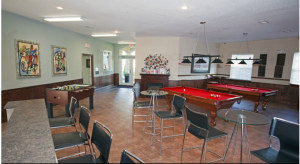Share This
Related Posts
Tags
Student Housing
By Erica Rascón on Jun 18, 2012 in News
 Student housing has grown out of its niche sector. More universities are turning to third party firms to meet the needs of increasing enrollment, and multifamily firms have been responsive.The demand for student housing is high – a recent National Multi Housing Council white paper revealed that a 38.7 percent increase in university enrollment over the past decade is creating a shortage of on-campus housing nationwide, and students who can’t find dorm accommodations naturally spill off campus to other options.
Student housing has grown out of its niche sector. More universities are turning to third party firms to meet the needs of increasing enrollment, and multifamily firms have been responsive.The demand for student housing is high – a recent National Multi Housing Council white paper revealed that a 38.7 percent increase in university enrollment over the past decade is creating a shortage of on-campus housing nationwide, and students who can’t find dorm accommodations naturally spill off campus to other options.
“States aren’t keeping up with building housing for the students that they’ve got. That presents a huge opportunity for private developers,” Jim Arbury, vice president of student housing for the NMHC’s National Student Housing Council, said in a recent interview with National Real Estate Investor.
Promising yields draw investors in droves, but also bring unique challenges for housing providers. Those that experience the most success understand what separates student housing from other multifamily housing projects. Today’s young renter requires a balance between private and public space, with living arrangements that promote social interaction but also offer quiet spaces for study and privacy. There is also an emphasis on technology and security. Meeting these needs forces a different approach to housing designs, amenities, and staffing than the methods use in traditional apartment communities.
A report by J Turner Research and the National Apartment Association reveals that suites—with private bathrooms attached to each bedroom—are considered necessities by 40 percent of student renters and 62 percent of parents. Spacious bedrooms with study nooks or built-in desks, ample storage, and in-unit laundry appliances also topped the list of desirable features in housing.
Award-winning developments offer multiple pools, 24-hour fitness centers, gaming rooms, theaters, coin-free payment options for laundry services, and an active staff that hosts multiple community events, group classes and excursions, and other resources for social interaction amongst residents.
Security features have not been overlooked by students or parents. A growing number of student projects are equipped with heightened security measures such as near field communication (NFC) and radio frequency identification (RFID) locks. Such features allow students to use mobile devices to control access to their bedroom doors via an electronic receiver. This minimizes the need for keys and can allow students to lock doors quickly and remotely.
The conveniences of modern technology cannot be overlooked with today’s student renter. Online leasing services are growing in popularity and availability across university communities, since rental decisions are often made remotely before arriving in the college community. Students likewise enjoy the ease of submitting payments online (particularly in cases where the parents are making payments on the student’s behalf). Utilities, garbage, and other such fees should be included in the monthly rental statement, with just one payment necessary, to simplify monthly transactions.
It is also vital for student housing to include the electronic infrastructure necessary to support the best available internet speeds, data demands, and coverage for the most popular wireless carriers in the area. A Presta Electronics poll found that within 5 years, 22 million students will take classes online. The poll also revealed that 73 percent of students say they “cannot study” without technology. And 38 percent claim that they cannot “go ten minutes” without checking email or using a smartphone, tablet, or laptop.

Look Before You Leap, Then Look Again
As architects, builders, and developers scramble to establish themselves on firm ground, many have turned to student housing. According to Jamie Wilhelm, executive vice president of public-private transactions for American Campus Communities Inc, recent projects are cited to yield returns between 7 and 8 percent.
As appealing as those figures may seem, student housing is not a sector for novices. Even seasoned firms encounter a myriad of challenges. The cost of building to students’ demands doesn’t always mesh with efficiency standards or price points for universities, prompting creative resolutions. Mixed-used facilities are increasingly common in student housing. Services—such as dining, shopping, and gaming—are added as an incentive to potential renters while increasing the potential revenue from each building; when executed proficiently, mixed-used facilities could help lower housing costs for students without diminishing the quality of living or the university’s revenue.
Enrollment figures and trends, occupancy in the college’s current rental market, and renters’ regional preferences are just a few areas in which firms should have solid understanding before undertaking a project.
Project leaders must also understand that the staffing of student housing communities works differently than in traditional renter communities. Staffing requirements must accommodate the renters and their parents. 24/7 support personnel is standard with student projects, as parents and colleges demand at least moderate on-site oversight. Staff must be trained to deal with different housing eligibility requirements, inexperienced renters, hosting community events, underage drug and alcohol abuse, and resolving roommate and parent issues.
Is your company providing student housing? What challenges have you encountered along the way, and how did you navigate any roadblocks? If you are a student or a parent of a college student, what amenities would you like to see offered in their campus-proximate housing?

